As the third largest source of freshwater in the world, Tibet is the starting point for many important rivers in Asia, including Brahmaputra River, Mekong River, and Yangtze River. These rivers are the lifeline of Tibet, as well as other regions in Asia, providing water to around 20 perfect of the world’s population.
During your trip to Tibet, you will likely encounter some of these major rivers in places like Lhasa, Nyingchi, and even Ngari. You will have a chance to enjoy stunning river views and explore famous scenic sites along their banks. Read this guide to learn about the major rivers of Tibet, and know well about the land’s natural wonders before your dream adventure.
Yarlung Tsangpo River: The Longest and Most Important River in Tibet
Rising from the glacier on the northern slope of the central Himalayas, the Yarlung Tsangpo River is the longest river in Tibet, spanning over 2,000 kilometers. It flows through four cities of Tibet: Shigatse, Lhasa, Shannan and Nyingchi, before eventually flowing into India and Bangladesh, where it is known as the Brahmaputra River.
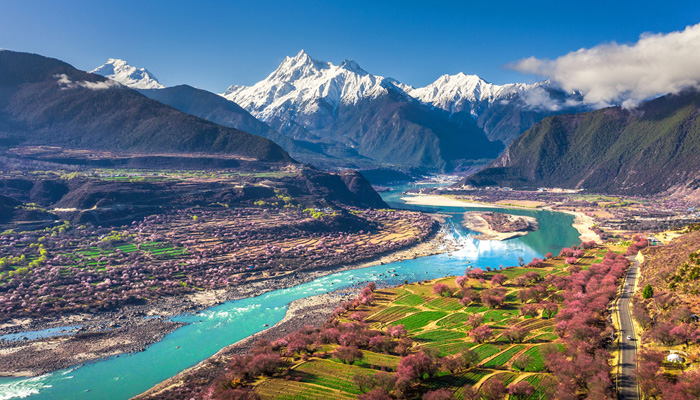 Yarlung Tsangpo River flows through beautiful Nyingchi.
Yarlung Tsangpo River flows through beautiful Nyingchi.Referred as the “mother river” of Tibetans, the Yarlung Tsangpo River has been the lifeblood of Tibetan civilization for centuries. It provides vital water courses for the plateau agriculture, and serves as an important traffic route for merchants and pilgrims.
To appreciate the breathtaking scenery of the Yarlung Tsangpo River, one best option is to go to visit Nyingchi. Here you will also see famous sites like Yarlung Tsangpo Grand Canyon and Mount Nnamjagbarwa, both located alongside the river. Besides, when you travel from Lhasa to Shigatse via Nyemo, you will also witness the scenic views of the river.
Join our Tibet Everest Base Camp tour for a smooth experience.
Lhasa River: The Main River of Tibet’s Holy City
Also called Kyi Chu, the Lhasa River originates from the Nyainqentanglha Mountains, and flows through the heart of Lhasa. Stretching 568 kilometers, it is a tributary of the Yarlung Tsangpo River, and joins the Yarlung Zangbo River in Qushui County of Lhasa.
The banks of Lhasa River features towering mountains ranging from 3,600 to 5,500 meters, creating a stunning landscape. While the basin has a mild climate, with flat terrain and fertile soil, making it perfect for growing highland crops like barley.
For most tourists, the Lhasa River is likely the first Tibetan river you will encounter when touring Tibet. Upon arrival in Lhasa, whether traveling from Lhasa Railway Station or Lhasa Gonggar Airport to downtown, you will be treated to the scenic beauty of the river along the way.
In winter, the Lhasa River is also a famous bird-watching site in Tibet. Thousands of migratory birds, including the beautiful Ruddy Shelduck, gather there. At that time, you can enjoy the breathtaking view while capturing impressive photos.
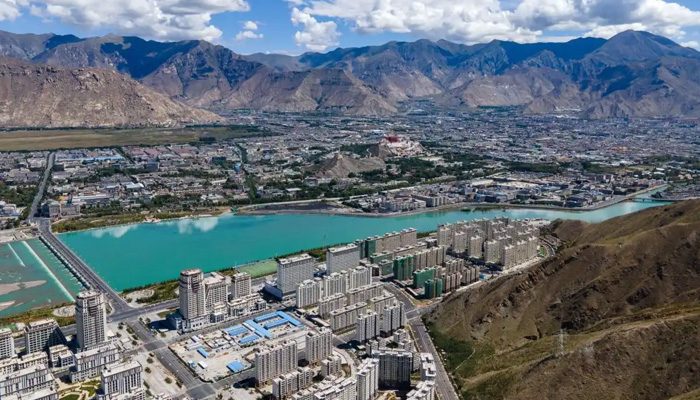 Lhasa River is the main river of Lhasa city.
Lhasa River is the main river of Lhasa city.Nyang River: The Scenic Waterway of Nyingchi
Also a tributary of the Yarlung Tsangpo River, the Nyang River mainly flows through Nyingchi in eastern Tibet, spanning about 300 kilometers. The river is famous for its clear emerald-green water, with low sand content, resembling a winding green jade belt as it passes through primeval forests.
The vegetation on both sides of the Nyang River is pristine, forming the stunning scenery of the area. On the other hand, many wild birds live near the Niyang River, and it is the wintering area of the rare Tibetan black-necked crane.
When you travel from Lhasa to Nyingchi via the new Lhasa-Nyingchi Expressway, you will enjoy the impressive views of the winding Niyang River. The Mila Mountain en route marks the divide between Lhasa and Nyang River. Once you cross the mountain pass, you will enter the Nyang River valley, where you can leisurely enjoy the river’s beauty along the smooth road.
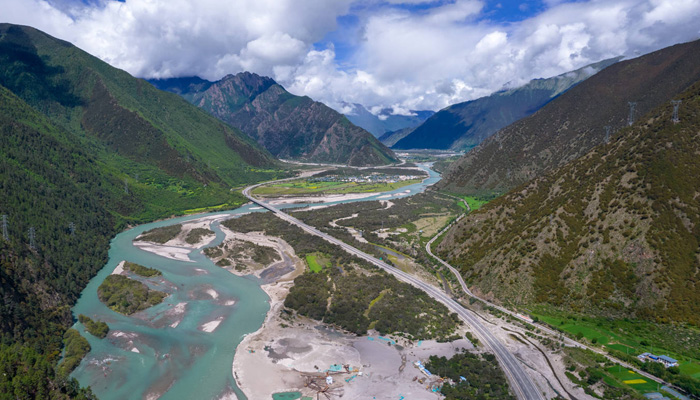 Lhasa-Nyingchi Expressway along the Niyang River
Lhasa-Nyingchi Expressway along the Niyang RiverNu River: The Mighty Salween, Rising from Tangula Mountains
The Nu River, known as the Salween River in Southeast Asia, is one of the most spectacular and turbulent rivers on the Tibetan Plateau. Originating from the Tanggula Mountains, the Nu River flows through the rugged terrain of Tibet, cutting through deep ravines and valleys, before flowing into Myanmar, Thailand, and finally into the Andaman Sea.
Covering a total distance of 3240 kilometers from its source to the estuary, the Nu River is famous for its wild and untamed beauty, with steep cliffs and stunning scenery attracting numerous adventurous tourists.
When you take the popular Chengdu to Lhasa overland tour via G318, you will encounter the famous “Nu River 72 Turns”, which is the most thrilling part of the route. Spanning only 12 kilometers, the route descends rapidly from the 4650-meter Yela Mountain Pass to the 2800-meter valley of the Nu River.
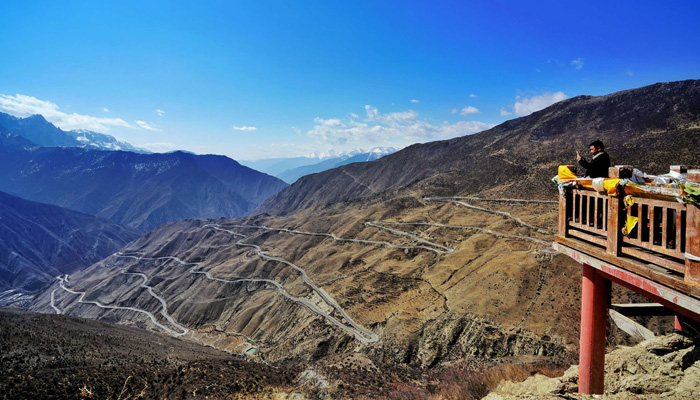 The G318 Highway from Chengdu to Lhasa passes the Nu River 72 Turns.
The G318 Highway from Chengdu to Lhasa passes the Nu River 72 Turns.Mekong River: The Longest River in Southeast Asia, Passing through Tibet
The longest river in Southeast Asia, the Mekong River starts from Tibetan Plateau, flowing through six countries including China, Laos, Cambodia and Vietnam, before finally entering the South China Sea. It is called the Lancang River in China, and flows through Tibetan Autonomous Region and Yunnan Province.
The Lancang River runs through the Hengduan Mountains and is one of the most typical north-south rivers in the world. It passes through some of the most spectacular landscapes in the region, with canyons, waterfalls and lush forests creating an enchanting atmosphere.
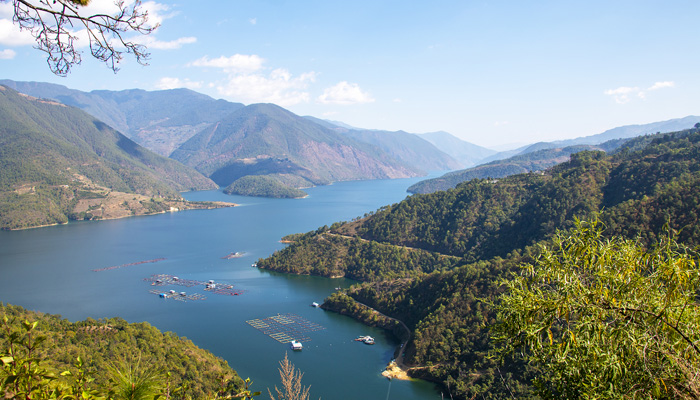 The Mekong River starts from Tibetan Plateau and is called the Lancang River in China.
The Mekong River starts from Tibetan Plateau and is called the Lancang River in China.When you travel from Chengdu to Lhasa by overland, you will also traverse the Lancang River at the renowned canyon region of Three Rivers Confluence. Three mighty rivers, Jinsha River, Lancang River run side by side here within a range of 300 kilometers, creating a spectacular scene.
Join our classic Chengdu to Lhasa overland tour for a smooth experience.
Yangtze River: China’s Longest River, Born on the Tibetan Plateau
The Yangtze River is the longest and most significant river in China, originating from the Tanggula Mountains of northern Tibet. It stretches for more than 6300 kilometers, crossing 11 provinces in China, and eventually flows into the East China Sea.
As the longest river in Asia, the Yangtze River is also the longest river in the world to flow solely in one country, playing an important role in China's agriculture, industry, history and culture. It also serves as a gateway to some of China’s most important cities, like Chongqing, Wuhan, and Shanghai.
One of the best ways to admire the charm of this famous river is by taking the Yangtze River Cruise. Traveling between Chongqing and Yichang, you will pass many popular sites along the sailing, including the world-famous Three Gorges Dam, Fengdu Ghost City, Qutang Gorge, etc.
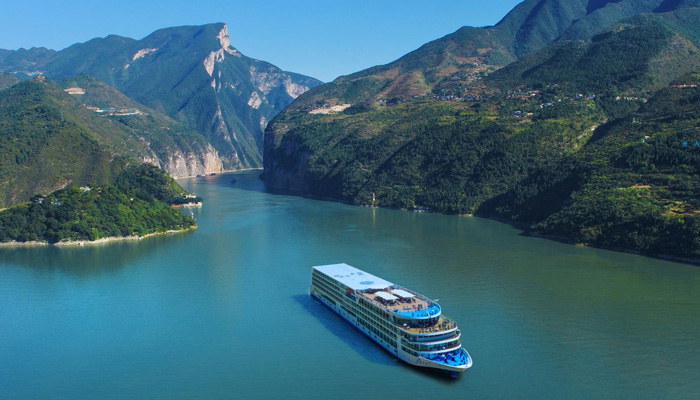 You can take a Yangtze River cruise to enjoy the charm of the great river.
You can take a Yangtze River cruise to enjoy the charm of the great river.Indus River: the Legendary River Originating Near Mount Kailash
The Indus River is one of the longest rivers in Asia, rising from glaciers near the sacred Mount Kailash in Tibet, flowing through Kashmir, into Pakistan, and finally into the Arabian Sea. For centuries, the river has been central to the development of ancient civilizations, especially the Indus Valley Civilization.
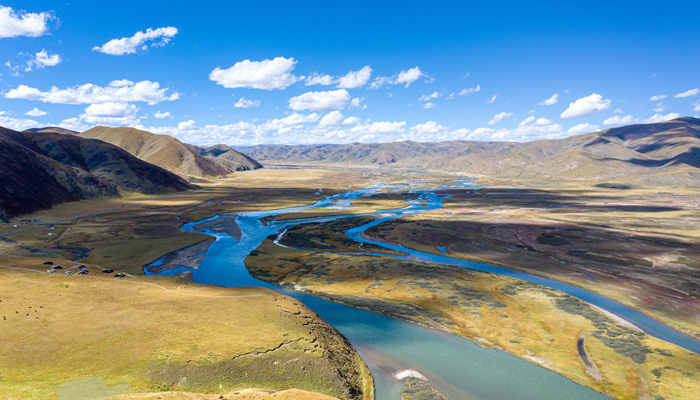 Indus River is called Shiquan River for its upper reach within the Tibetan region.
Indus River is called Shiquan River for its upper reach within the Tibetan region.Spanning 2900 kilometers, Indus River is called Shiquan River for its upper reach within the Tibetan region. It is not only an important river for the people living along its banks, but also has great religious significance. Mount Kailash, considered the center of the universe by Hindus, Buddhists, Jains, and Bon followers, is located near the river’s source and attracts thousands of pilgrims every year.
Join our classic Mount Kailash tour for a smooth travel experience.
Conclusion
The rivers in Tibet are the lifeblood of the region, helping to shape the geography, culture and history of the region. When touring Tibet, you will have the chance to witness the stunning natural beauty of these rivers, whether it is the broad Yarlung Tsangpo or the torrential Nu River, in one way or another. For more questions about Tibet’s rivers or other travel tips, feel free to contact us.




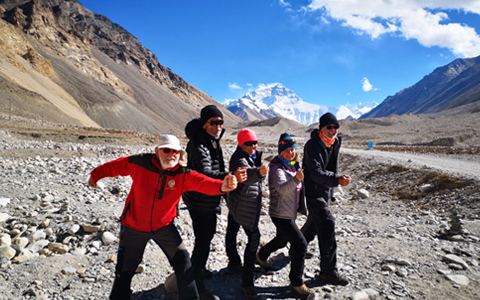
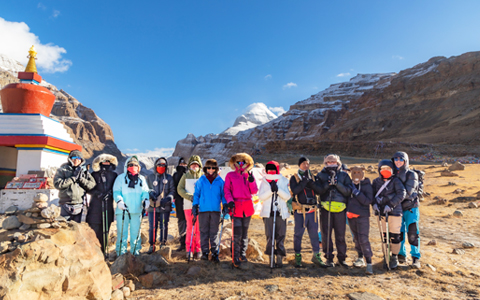
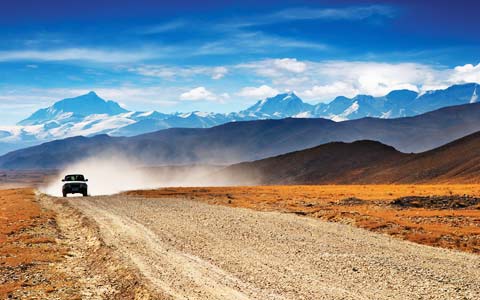
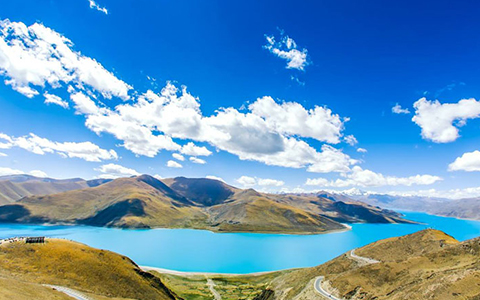
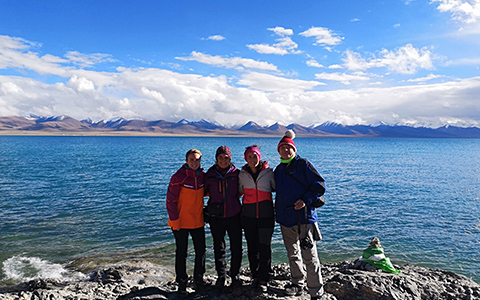
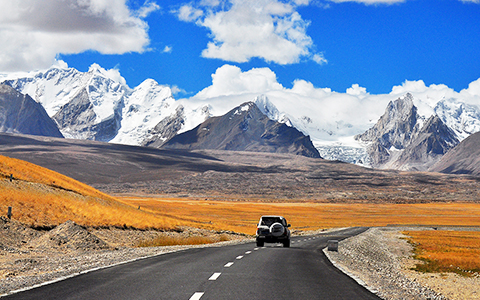















 Yarlung Tsangpo River flows through beautiful Nyingchi.
Yarlung Tsangpo River flows through beautiful Nyingchi.
 Lhasa River is the main river of Lhasa city.
Lhasa River is the main river of Lhasa city. Lhasa-Nyingchi Expressway along the Niyang River
Lhasa-Nyingchi Expressway along the Niyang River The G318 Highway from Chengdu to Lhasa passes the Nu River 72 Turns.
The G318 Highway from Chengdu to Lhasa passes the Nu River 72 Turns. The Mekong River starts from Tibetan Plateau and is called the Lancang River in China.
The Mekong River starts from Tibetan Plateau and is called the Lancang River in China.
 You can take a Yangtze River cruise to enjoy the charm of the great river.
You can take a Yangtze River cruise to enjoy the charm of the great river. Indus River is called Shiquan River for its upper reach within the Tibetan region.
Indus River is called Shiquan River for its upper reach within the Tibetan region.







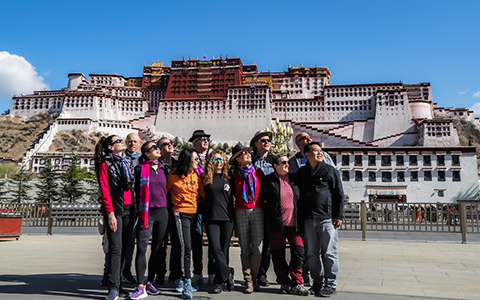


Ask a Quick Question